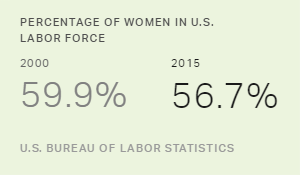The global economy is floundering. All over the world, companies are struggling, from global corporations with worldwide market share to mom-and-pop shops that employ a handful of people. According to the U.S. Department of Labor, the U.S. economy has shed 3.6 million jobs since the start of the recession in December 2007, and the unemployment rate climbed to 7.6% in January 2009. Even China -- for years one of the world's hottest economies -- is feeling the effects of the global economic downturn.
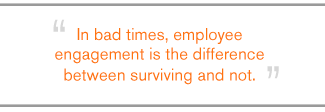
There's little managers can do about the economy at large. But there are things they can do to protect their companies, their employees, and themselves. One of the best ways for managers to hedge against professional and organizational disaster is by engaging their employees. Employee engagement -- an emotional attachment between an employee and the workplace -- is always important. But now, it could mean a company's survival.
"In good times, employee engagement is the difference between being good and being great," says James K. Harter, Ph.D., Gallup's chief scientist of workplace management and well-being and coauthor of 12: The Elements of Great Managing. "In bad times, it's the difference between surviving and not. In good times and bad, low engagement reduces performance and profit. And under the current circumstances, many companies can't afford to let those drop."
The current state of fear and uncertainty, however, makes it more difficult for managers to keep employees focused and motivated. The Gallup-Healthways Well-Being Index, a comprehensive measure of the state of Americans' health, showed a decline in well-being in the United States in the past year. "Given the significant changes in the U.S. economy, we have seen significant shifts in the percentage of Americans who are 'thriving,' 'struggling,' and 'suffering,'" says Harter. And managers around the world are likely seeing a similar erosion of well-being among their workers as the economic crisis that began in the United States has affected economies around the world.
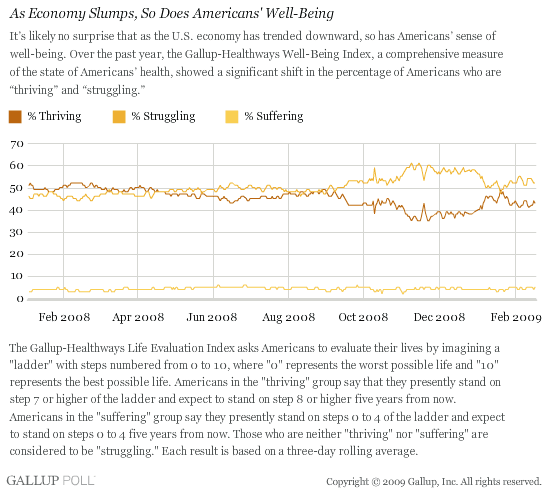
But for managers, keeping employees engaged despite the economic turmoil is key because engagement is directly linked to the performance metrics that matter most to businesses right now. When compared with their industry peers, organizations with more than four engaged employees for every one actively disengaged employee saw 2.6 times more growth in earnings per share than did organizations with a ratio of slightly less than one engaged worker for every one actively disengaged employee. And earnings per share for top-quartile (in engagement) organizations outpaced the earnings per share of bottom-quartile companies by 18%. (See "Investors, Take Note: Engagement Boosts Earnings" in the "See Also" area on this page.)
That's the big picture at the macroeconomic level. On a more micro level, the top quartile of business units boast 12% higher customer advocacy, 18% higher productivity, and 12% higher profitability than bottom-quartile business units. The bottom quartile of business units have 51% more inventory shrinkage, 31% to 51% more employee turnover, and 62% more accidents than business units in the top quartile.
As a result, employee engagement can inoculate business units and companies against lost profitability. And the onus of creating that engagement is on managers, who are the epicenter of the work environment. "Creating engagement in an economic downturn is going to be hardest on middle managers because they're stretched so far," says Denise McLain, Gallup principal. "They have more to do with fewer people, and many of them are concerned about keeping their own jobs."
Engagement culture for rough times
Even if layoffs aren't imminent in a workplace, employees are likely to be worried about how the economy may affect their spouses, their children, or their 401(k) or savings. So helping them formulate a positive emotional response to their work is paramount. Fortunately, there are levers managers can pull to help employees stay positive and engaged. According to Gallup research, employee engagement depends on meeting 12 human needs, such as feeling cared for and being recognized for doing good work. When all 12 of those needs are met, employees can become engaged, sometimes passionately so. Gallup measures how effectively managers and organizations are meeting those needs with a 12-item assessment, the Q12. (See graphic "The 12 Elements of Great Managing.")
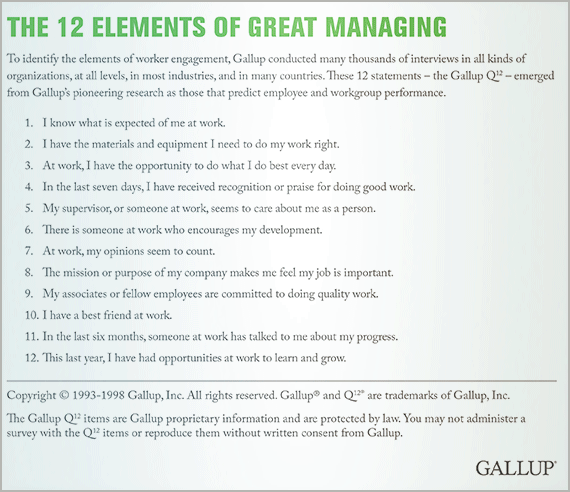
The first six Q12 items refer to the foundational aspects of working that get at the heart of the employment relationship: As an employee, what do I give, and what do I get in return from my company? They provide a relatively efficient barometer of employees' emotions and how well supervisors are managing change.
"Use the first six items of the Q12 as a base for managing emotions," says Scot Caldwell, a Gallup learning solutions consultant. "They can provide a guide to what managers need to do to encourage engagement and can help them strategically meet the needs of their employees as those needs arise -- and those emotional needs will change day to day." (See sidebar "Managing in Turbulent Times.")
Managing in Turbulent TimesThese six tips can help managers keep employees focused and engaged in times of change:
|
Keeping the first six Q12 items on their mental desktop is a good way for managers to assess and bolster moment-by-moment employee engagement. "Now, more than ever, managers should know their employees well. Some of them may have lost a friend to layoffs, or some may have a spouse who has lost a job. All of them are worried," says Harter. "The more you know what employees are thinking and feeling, the more you can show your employees how to be part of the solution rather than a victim." 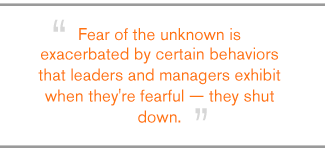
Being part of the solution requires a structure that counteracts the distractions that rapid economic change can inflict. The best structure for maintaining engagement is one that promotes recognition, caring, stability, security, hope, and well-being -- things we all need to get through the day productively, according to Gallup management experts.
Recognition
Recognition provides employees with a personal, positive indication that they are valued contributors. This can be incredibly powerful when economic news is unrelentingly negative. "If managers aren't able to give employees pay increases or lighten their load," says McLain, "emotional and psychological support is important and may improve productivity."
Managers shouldn't reserve recognition only for big wins; they should applaud small victories too. In good times or in bad, managers must know how their employees prefer to be recognized. Some crave public recognition, some want a private word with the boss, and others want a piece of paper they can frame and put on the wall. It's important to get it right, because when it comes to recognition, individualization matters. (See "The Best Ways to Recognize Employees" in the "See Also" area on this page.)
Though managers tend to think of recognition as a reward for a job well done, it also pays to recognize an individual's greatest talents. People are more likely to be productive and engaged when they're working in an area that maximizes the ways in which they most naturally think, feel, and behave -- and that rewards both the worker and the manager. If managers have the latitude, they should consider ways to move people into work that plays to their talents.
It also helps morale to focus discussions on employees' strengths rather than their weaknesses. "I recommend spending maybe eighty percent of your time talking about an employee's strengths and twenty percent on things they should improve," says Tom Rath, Gallup global practice leader and coauthor of Strengths Based Leadership.
Stability and security
It's natural for employees to be fearful in uncertain economic times. But fear paralyzes them, which only makes things worse. "Fear undermines even the more stable companies because employees don't know where the company or the economy or the community is going," says Shane Lopez, Ph.D., a Gallup Senior Scientist in residence and a leading researcher of hope. "Fear of the unknown is exacerbated by certain behaviors that leaders and managers exhibit when they're fearful -- they shut down. That makes people less likely to gather and distribute the information that they need."
The antidote to fear in today's circumstances is stability and security. Managers may not be able to promise everybody that they'll keep their jobs -- and if they can't, they shouldn't. If employees suspect that the boss is stonewalling or sugarcoating, they can become even more fearful, which can further destabilize their engagement. So managers should strive to be honest and candid while keeping the work environment as close to normal as possible.
In practical terms, this means making March 2009 seem as much as possible like March 2008. Managers should listen and respond to workers' concerns, give them whatever information they can -- without scaring them unnecessarily, then get back to business as usual. And don't tell employees that they should feel lucky to have a job at all. "If you operate on a sense of gratitude, that's not going to make people feel secure because that's actually a threat," says Barry Conchie, Gallup leadership expert and coauthor of Strengths Based Leadership. "Implied threats are a recipe for very significant disengagement."
One way to preserve stability is through office traditions. Managers may not be able to conduct them as they used to -- the employee who always circulated the birthday cards may be gone, and the company may not have the budget for the holiday party -- but keeping up traditions helps.
For example, Amy Jurgens is the director of a department at a college that's rapidly shedding workers. She used to order pizza for her staff every Friday but no longer has the funding. "But we still have lunch together every Friday," Jurgens says. "I didn't suggest a potluck thing because some of us can't afford it or don't have the time to cook like that. But I actively encourage us all to eat together every Friday -- and you'd be surprised at how many bring frozen pizza."
Well-being
When stress mounts, eating well, exercising, and getting enough sleep are all crucial to maintaining well-being. So managers should encourage employees to practice healthy behaviors. A healthy team is likely to have fewer sick days and fewer accidents, which contribute to the bottom line. Engagement also can help promote well-being -- the more engaged the worker, the less likely he or she is to come in or call in sick. One Gallup study found that in a 10,000 person company, disengagement represents 5,000 days of absence, equaling $600,000 in lost salary alone.
"There's an interaction between susceptibility to sickness and a lousy work environment," says Harter. "A good environment can make people less susceptible to missing work." (See "Your Job May Be Killing You" in the "See Also" area on this page.)
There's also a strong psychological component to well-being, and a good work environment affects that too. When Gallup surveys workers on their sense of well-being, people in positive work environments are significantly more likely to be thriving in their overall lives and have better daily experiences such as happiness, learning something interesting, being treated with respect, and less stress. And fortunately, the work environment is one of the few things managers can control and improve.
However, the evidence suggests that managers should be on the watch for an erosion of employee well-being. According to Harter and Raksha Arora, a Gallup senior consultant, the Gallup-Healthways Well-Being Index shows "a steady downward trend in the percentage of people who are thriving in 2008, particularly among full-time workers who are married with children. This downward trend correlates with changes in how people perceive their personal standard of living. But more recent research indicates that the decline in thriving Americans is particularly pronounced among workers with dissatisfying work or a bad boss." (See "A Low-Quality Job Makes a Tough Economy Tougher" in the "See Also" area on this page.)
Don't forget your own engagement
If this advice sounds like the stuff of good management, it is. It just has to be done consciously and with great sensitivity. "The basics of good management don't change, but they do get harder in tough times," says Caldwell. "Employees always need to trust their leaders and managers, and they always need to feel cared for. Right now, they need it a little more."
However, it's important to note that managers need to be engaged too. They also need to feel cared for, recognized, and safe when things are at their worst. Managers who are not engaged are going to have a very difficult time engaging their teams. So managers -- whatever you're giving your staff, make sure you get a big helping of it yourself.
